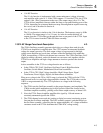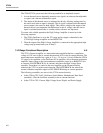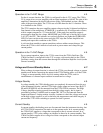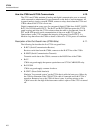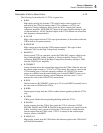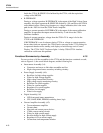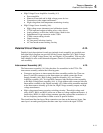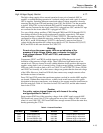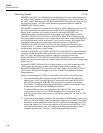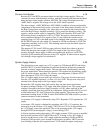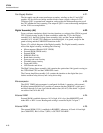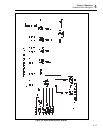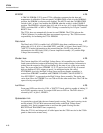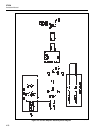
Theory of Operation
Detailed Circuit Description
4
4-13
High Voltage Supply Section 4-17.
The high voltage supply allows normal operation from a pair of nominal 400V dc
supplies, or troubleshooting operation in a reduced voltage mode with a pair of nominal
50V dc supplies. Switching between normal and reduced-voltage operation is done by
removing the plug from J301 and inserting it into J303. See Section 7 for the procedure
to do this. (Plug P301 is wired with both 400V and 50V transformer taps so that the
400V taps are connected in the circuit when P301 is plugged into J301, and the 50V taps
are connected in the circuit when P301 is plugged into J303.)
Two sets of high voltage rectifiers, CR301 through CR304 and CR310 through CR313,
form bridge rectifiers for the positive and negative supplies, respectively. The output
from these bridges is filtered by C301/C321 and C320/C322. The capacitor pairs are
configured in series to obtain the necessary working voltage. Bleeder resistors R303,
R314, R315, and R 308 discharge C301/C321 when power is removed and form a
voltage divider that equalizes the voltage across halves of C301. Resistors R335, R337,
R336, and R339 do the same function for C302/C322.
Warning
Do not rely on the power supply LEDs as an indication of the
presence of high voltage. Always use a voltmeter to check for
high voltage between TP307 and TP301, and between TP307
and TP304.
Components CR317 and CR318 are high intensity red LEDs that provide visual
indication of the presence of high voltage. These LEDs have high luminosity at low
current levels. They are located in series with the bleeders for the positive and negative
supplies, using about 1 mA of current for bias. Under average lighting conditions, these
LEDs are visibly lit with as little as 40V on C301/C321 and C320/C322. Zeners VR306
and VR307 are normally off, as their zener voltages are greater than the forward voltage
of the LEDs. However, should an LED fail, these zeners carry enough current to allow
the bleeder resistors to function.
Fuses F301 and F302 protect the transformer against overload in case the 400V supplies
are shorted. Without these internal fuses, a short-circuit would cause excessive power
dissipation in the power transformer, even though ac line current would be insufficient to
blow the main fuse. Table 4-1 lists data for fuses F301 and F302, and the other internal
fuses in the 5725A.
Caution
For safety, replace internal fuses only with fuses of the rating
and type specified in Table 4-1.
Surge arrestor E302 fires if the secondary voltage of the +400V supply exceeds 600V.
This should only occur if the 5725A is plugged into an ac line voltage of 200V or more
when it is set to 100-120V. E302 would then draw enough current to blow the main fuse,
thereby protecting the 5725A.
Table 4-1. Internal Fuse Data
REF DES. ASSEMBLY RATING TYPE
F301 Power Supply (A4) 2A, 600V Littelfuse BLS or equivalent
F302 Power Supply (A4) 2A, 600V Littelfuse BLS or equivalent
F201 Current Amplifier (A2) 20A, 32V Bussman AGC or equivalent
F202 Current Amplifier (A2) 20A, 32V Bussman AGC or equivalent



